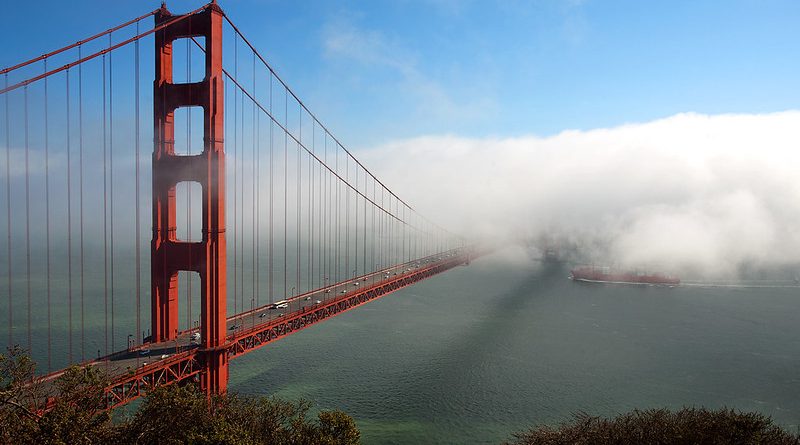
Empire Builders – America
From the Declaration of Independence at Independence Hall, through to tech solutions of Silicon Valley, America has shaped the world we live in – all the while shaping its own identity through the iconic buildings and structures that chart the nation’s history.
Jefferson Monument, Washington DC
Through bustling ports and strategic forts, cultural quirks and cathedrals of commerce, this episode of Empire Builders tells the the incredible story of the United States through 12 key historic sites.
Our story starts in the humble surrounds of a meeting hall in Philadelphia, with the ‘Thirteen Colonies’ declaring independence from the United Kingdom. And nearby , in Washington D.C., stands the Washington Monument, a tribute to iconic father of the nation and city founder. It was completed almost a century after it was originally commissioned, the huge obelisk a testament to character of man it celebrates.
No geographical entity was more important to the spread of America westwards than the Mississippi River. President Jefferson sought to ensure passage through the purchase of the historic Port of New Orleans at the river’s mouth. He could never have dreamed the outcome; with the eventual ‘Louisiana Purchase’ being described as the greatest land deal in history, almost doubling the size of the United States over night.
Hollywood Sign, Los Angeles
Andrew Jackson’s bold and controversial capture of the perfectly preserved Spanish Fort Barrancas at Pensacola culminated in the transfer of Spanish Florida to the United States. Perhaps even more significantly, it resulted in the Spaniards ceding claims over ‘New Spain’, emboldening American progress to the west and propelling Jackson toward the Presidency.
In the story of America’s conquest of west, no chapter burns more brightly in the American conscious than the Battle of the Alamo, with Davy Crockett’s legendary last stand confirming the small Spanish mission’s place in history. It led ultimately to Texas joining the United States and, after victory in the Spanish American War in 1848, the size of the country almost doubling.
With the continent settled, it was soon to be linked by the fantastically ambitious Transcontinental Railroad. The grand project required a grand terminus, with the Vanderbilt family commissioning a fittingly advanced and opulent departure point: ‘Grand Central Terminus’ became the gateway to the nation.
Washington Monument, Washington DC
With the nation mobilised, it industrialised at an unprecedented rate. Andrew Carnegie’s Homestead Steel Mill was a game changer, dwarfing anything that industry had witnessed. It remained the largest steel producing plant on the planet for the best part of a century.
Fast becoming the most powerful nation on earth, the United States now expanded its strategic and military horizons beyond its borders, taking over the Kingdom of Hawaii followed by the Philippines, Puerto Rico and parts of Cuba following the Spanish American War of 1898. Then the huge Panama Canal project made transit of ships between the American continents possible for the first time.
Economic success meant boom time in the city; and nowhere was this more evident than New York City. Tycoons set about building great monuments to their success, the greatest of all them all was the Empire State Building.
The Hollywood Sign hailed success of different kind on the west coast – the eyes of the world now fell on America as it exported movies around the globe. But the symbol that would go on to define this new industry actually started life as a real estate advertisement hoarding.
After success in WWII, the Cold War raged, but with the collapse of the Soviet Union the United States became the world’s only superpower. Meanwhile, America had looked to the next frontier: space exploration. The colossal Manned Spacecraft Center in Houston, Texas would become the Johnson Space Center – Mission Control for the Apollo and Space Shuttle expeditions.
Crowning America’s technological dominance is Silicon Valley. Apple’s gargantuan new HQ was based on an idea of the late Steve Jobs, and raises the bar for contemporary design standards everywhere. Constructed costs were eye-wateringly expensive, but it is affectionately nicknamed the Spaceship.
Credits
narrator
BOB BLYTHE
*
titles & graphics
MARTINA DEO
CGI artist
SIMON ROSS
*
camera
SIMON ROSS
JAKE CHRISTIAN
drone operator Silicon Valley
MATTHEW ROBERTS
*
facilities
GUILTFREE POST
dubbing mixer
CHRIS MORRIS
*
editors
KEITH WILSON
ANDREW FEGEN
online editor
DANNY DAVIS
*
title music
PAUL MOUNSEY
music by
PAUL MOUNSEY
COLIN WINSTON FLETCHER
AMANDA KRAMER
JON WYGENS
MICHAEL CONN
NAINITA DESAI
MALCOLM LAWS
BOB LOCKE
TIM NORFOLK
MARK TAYLER
DANIEL PEMBERTON
JAMES CHRISTOPHER
SIMON HILL
*
post production coordinators
EMILIO REY
JAKE CHRISTIAN
production accountant
RASHIDA PATEL
production Assistant San Francisco Bay Area
MICHAEL SKOLNICK
production Assistant New Orleans
MICHAEL HOGAN
production manager
TARA BENSON
*
executive producer
IAN CROSS
*
produced and directed by
SIMON ROSS
*
Produced by Pilot Film and TV Productions
© Pilot Productions MMXVIII
